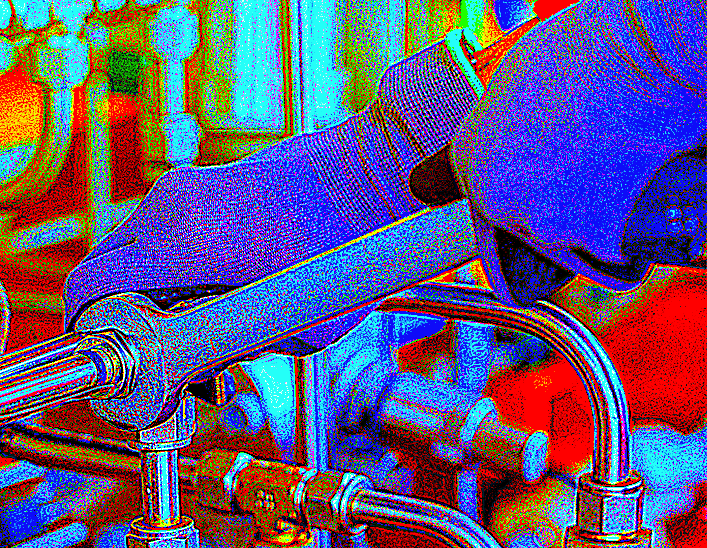Detailed work instructions are the most important equipment-reliability-improvement tool we have: They explain the meaning of checklists. Such instructions list WHAT, HOW, and HOW WELL to perform a task, as opposed to checklists that typically just list WHAT to do. Think of detailed maintenance-work instructions as procedures and of checklists as summarized reminders of what needs to be accomplished by the procedures, i.e., the critical steps.
All too often, however, checklists prevail over work instructions. Why? Checklists are easy and quick to develop. Most maintenance decision-makers believe that their maintenance people are “skilled” and don’t need to be told how to perform a maintenance task. Some maintenance pros are offended when told to follow the procedures. After all they are skilled, have been performing the tasks for years, and believe the procedures don’t reflect the way they choose to get the job done. Well, what about the new maintenance people who have little to no experience on the equipment?
Sadly, maintenance checklists and work instructions frequently become suggested guidelines, rather than a required scope and sequence for job performance. When that happens, we have significant human variation in task performance that will result in equipment failures and injuries.
Maintaining the accuracy of work instructions can be a huge challenge. As maintenance personnel discover errors in the instructions, they should be encouraged to mark the instructions for revision. That requires verifying the suggestions, making changes in the documents, and communicating the changes. When nobody is responsible for keeping maintenance-work instructions up to date, errors are perpetuated, equipment reliability suffers, and the instructions’ credibility is called into question.
A CLASSIC EXAMPLE
Here’s a good, real-world example of work-instruction challenges. I saw it for myself.
While performing a maintenance-and-operations assessment of the most critical assets in a plant, I dug into the equipment’s work-order history files. The good news, the work instructions were detailed, step-by-step procedures that listed safety requirements, parts and supplies needed, and go/no-go specifications. The site also kept five years of history in hard copy.
The history on one of the assets was particularly interesting, due to the mark-ups and notes that a maintenance employee had made on the preventive maintenance (PM) work instructions. While other personnel had performed PMs on the equipment, only one person had taken the time and effort to mark up and annotate the PM instructions.
I give that maintenance mechanic high marks for persistence. For much of the five-year period reflected in the equipment history, every time he performed a quarterly PM, he marked up the work instructions. All of those notes were in the files. I was impressed with this individual’s desire for PM accuracy.
As a bit of background, during a maintenance assessment, I look at three elements of reliability: the EQUIPMENT, the WORK PROCESSES, and the PEOPLE. The work instructions are the work processes that the equipment requires to be reliable, and the people are those who perform the tasks to keep the equipment reliable.
So, after I reviewed the work-order history and the extensive and consistent markups, it was time to look at the equipment and talk to the people doing the work, especially the one person who spent so much time marking up the documents.
With several of the most recent markups in hand, I showed up at the equipment in question and began going through the inspection. I soon became aware of someone watching my every move. It was the note-writing mechanic I had wanted to meet.
As I explained what I was doing and the purpose of the critical-asset maintenance assessments, he scowled. “I take pride in my work here, and I care for these machines,” he exclaimed. “Those PMs you’re holding there have my notes and changes on them. I’ve been doing that for more than three years. And you are the first person who ever showed up to see what’s going on here.” I was all ears.
“Let me show you,” he continued. “See this task here? See my notes? That part of the machine was removed three or so years ago, and it is still on the PM! See these other notes? They’re changes that engineering made to the machine, and these tasks listed here do not apply to the changes. I wrote a new procedure right here. Thank you for following up. I just hope someone up front will make the changes.”
BOTTOM LINE
Maintaining maintenance checklists and work instructions for critical assets is as important as maintaining the equipment itself. Then, assuring that people actually follow the work instructions is the most critical element of reliability. After all, equipment reliability is a result of what people do to the equipment.TRR
ABOUT THE AUTHOR
Bob Williamson is a long-time contributor to the people-side of the world-class-maintenance and manufacturing body of knowledge across dozens of industry types. His background in maintenance, machine and tool design, and teaching has positioned his work with over 500 companies and plants, facilities, and equipment-oriented organizations. Contact him directly at 512-800-6031 or bwilliamson@theramreview.com.
Tags: reliability, availability, maintenance, RAM, workforce issues, work orders, planning and scheduling



